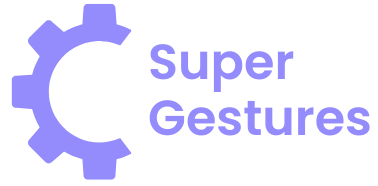Table of Contents
ToggleIn a world where coding can feel like deciphering ancient hieroglyphics, bubble software development pops up as a refreshing alternative. Imagine crafting powerful applications without the headache of complex programming languages. With Bubble, anyone can become a digital Picasso, painting their ideas into reality with just a few clicks.
Understanding Bubble Software Development
Bubble software development simplifies app creation, making it accessible for non-programmers. Users can build functional applications using a visual interface, eliminating the complexities of traditional coding.
What Is Bubble Software?
Bubble software is a no-code platform that empowers users to design, develop, and launch web applications. This platform enables individuals with no technical background to create sophisticated apps, reducing the need for specialized knowledge. Through drag-and-drop elements, users can manipulate various design aspects and integrate database functionalities seamlessly. Bubble supports various project types, making it versatile for startups, small businesses, and individual entrepreneurs.
Key Features of Bubble
Bubble offers several key features that enhance its usability. Its visual programming interface allows for intuitive app design, minimizing the learning curve. The platform provides a robust database management system that supports data storage and retrieval efficiently. Additionally, users can implement APIs easily to connect with external services. Custom workflows streamline user interactions, enhancing the overall user experience. Real-time collaboration tools facilitate teamwork, enabling multiple users to work on the same project simultaneously.
Benefits of Using Bubble for Software Development

Bubble provides significant advantages for software development, particularly for non-programmers. This platform streamlines the creation process, enabling rapid development and cost efficiencies.
Rapid Prototyping
Rapid prototyping emerges as one of Bubble’s core strengths. Users can quickly transform ideas into functional prototypes without writing code. Flexibility in design allows for immediate feedback and adjustments based on user input. By enabling real-time testing of features, teams iterate swiftly, often reducing the time from concept to market. Stakeholders can visualize the application in development, fostering effective collaboration. Frequent updates enhance project alignment with user needs, ultimately driving innovation.
Cost-Effective Solutions
Cost-effective solutions represent another major benefit of using Bubble. Development through traditional coding often incurs high expenses, including hiring developers and long project timelines. Bubble eliminates many of these costs by empowering users to create applications without extensive programming knowledge. Subscription plans cater to different budgets, providing scalability for startups and small businesses. Overall, choosing Bubble significantly reduces development costs while maintaining application quality. This financial efficiency encourages entrepreneurs to allocate resources strategically toward growth and improvement.
How to Get Started with Bubble Software Development
Starting with Bubble software development is straightforward. Users need to follow a few essential steps to leverage this intuitive platform effectively.
Setting Up Your Account
Creating an account on Bubble is simple. Visit the Bubble website and click on the sign-up button to get started. Users enter their email addresses and set passwords to create accounts. After verification, you’ll access a personal dashboard. Customizing your dashboard allows users to manage projects comfortably. The platform offers a free plan for beginners, making it ideal for experimentation. New users can explore Bubble’s features without incurring costs, enabling them to decide if it meets their needs.
Building Your First Application
Building an application on Bubble starts with a clear idea. Users can select from templates or begin with a blank canvas. Choosing a template provides a faster route to functional apps, while starting from scratch allows for complete customization. The drag-and-drop interface simplifies adding elements such as text boxes, images, and buttons. Users connect these elements to their databases through intuitive workflows. Setting up workflows facilitates interactions like user sign-ups and data submissions. Previewing the application in real-time helps users engage with their creations and make adjustments quickly.
Common Challenges in Bubble Software Development
Bubble software development offers many advantages, but it also presents several challenges that users should consider.
Performance Issues
Performance issues can arise due to Bubble’s reliance on a cloud infrastructure. Heavy applications might experience slow loading times, impacting user experience. High traffic can exacerbate these challenges, with lag disrupting engagement. Developers often face difficulties optimizing complex workflows, which can lead to inefficiencies. Regular performance testing can help identify bottlenecks, allowing quick adjustments to enhance app responsiveness. Caching strategies also improve load times, ensuring users have a smooth experience.
Limitations of the Platform
Bubble has specific limitations that can hinder development. Users may find complex functionalities challenging to implement without traditional coding. Customizability is sometimes restricted, making unique designs difficult to achieve. Third-party plugin integration may also pose issues, especially if plugins don’t meet specific project needs. Additionally, reliance on Bubble’s architecture means some built-in features might not suit advanced use cases. Understanding these limitations allows developers to strategize effectively and utilize Bubble’s strengths efficiently.
Bubble software development stands out as a transformative approach for those looking to create applications without the complexities of traditional coding. Its user-friendly interface and robust features enable non-programmers to bring their ideas to life efficiently. This no-code platform not only accelerates the development process but also fosters innovation through rapid prototyping and real-time collaboration.
While there are challenges to consider such as performance issues and limitations in customizability, the benefits of using Bubble far outweigh the drawbacks for many entrepreneurs and small businesses. By embracing this powerful tool, users can focus on what truly matters—turning their visions into reality while optimizing resources for growth.




